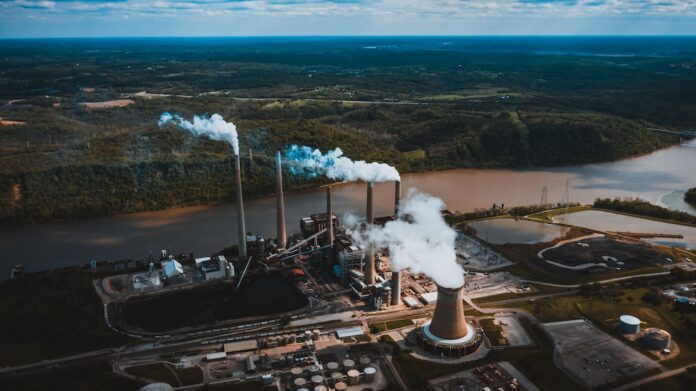
Climate disasters are here to stay, and they’re putting excessive and unequal burdens on the finances of Black Americans. Since 1980, the United States has experienced 371 weather and climate disasters, costing an estimated $2.6 trillion, according to the National Centers for Environmental Information.
Federal and state governments are not the only ones footing the bill for the damage. Many households are on their own to deal with the aftereffects, as emergencies create out-of-pocket expenses that some simply cannot afford.
Black families risk losing their homes and savings from these emergencies. Only 35% of Black adults have a three-month emergency fund, according to a study from Pew Research Center.
However, three-months worth of savings may not cover the cost of significant damage to a home, a car, or long-term job loss.
“The financial realities for these families really become a life or death situation,” said Shannon Van Zandt, professor of urban planning at Texas A&M University, during a recent panel event sponsored by the Urban Institute on Sept. 29.
To protect Black wealth, financial preparedness for the impact and consequences of these disasters is crucial. Many of the areas with increased exposure to extreme heat, wildfires, or flooding are places that Black people call home, including cities like Atlanta, New York, Philadelphia, Los Angeles, and Houston.
Black people are part of a vulnerable population and more likely to experience “disproportionate financial harm” due to climate hazards, according to a new report from the U.S. Department of the Treasury.
The Census Bureau estimates nearly 30 million Black people have been displaced from their homes in the last year due to natural disasters. Hurricanes have had the most impact on Black communities.
“Especially for our vulnerable families, they are constantly in a state of recovery, particularly because it takes them so much longer to recover in the first place,” Van Zandt said. “So anything that we can do to make them more resilient for life is going to be useful during a disaster as well.”
Where People’s Finances Hurt the Most
The Treasury report found that disaster victims often experience a hit on their credit scores, increased debt and rates of bankruptcy, decreased access to credit cards, and increased fraud and scams.
A major, large-scale disaster is not the only time these issues arise.
Medium-sized disasters, such as tropical storms, flooding, mudslides, and landslides, can have the “largest outsized impact on financial health and well-being,” said Andrew Rumbach, senior fellow and co-lead for the Climate and Communities Practice Area at the Urban Institute, during his presentation at the event. He said these happen more frequently but are often not declared major disasters, leaving the survivors ineligible for assistance.
A lack of proper homeowners insurance that aligns with the type of climate disaster most common in their area poses another problem for Americans living in climate-risky areas.
Insurance gaps happen for various reasons, including rising costs and lack of options. So far in 2023, Farmers Insurance, State Farm, Allstate, and others have stopped offering new policies in some states where disasters are becoming more commonplace.
There’s also a concern for residents of rural communities or older homeowners, Van Zandt said. Lenders usually require homeowners to maintain property insurance, but once a mortgage is paid off, it’s not required, even though a lapse in coverage could cause serious consequences in a disaster.
Then, there are renters.
“The majority of our disaster recovery programs are aimed at owner-occupied housing, and that is missing out on one of our most vulnerable populations. And it’s a large vulnerable population. We’ve seen very little attention to renters in particular.”
SHANNON VAN ZANDT, PROFESSOR OF URBAN PLANNING AT TEXAS A&M UNIVERSITY
Climate disasters damage businesses and critical infrastructure, leaving survivors out of work or with few options to get to work. “The loss of even a single paycheck or missing work a handful of times can be the difference between surviving and not surviving for a lot of these families,” Van Zandt said.
Suzanna Fritzberg, deputy assistant secretary for the Treasury, said these events “exacerbate the need for comprehensive child care funding” to help providers and keep families from struggling to find affordable care.
Building Financial Resilience
Preparation is the key to building financial resilience for those vulnerable to hardship after disasters. Preparedness includes making physical and digital copies of key documents, like birth and marriage certificates, Social Security cards, insurance policies, deeds, and medical care contact information.
The Treasury Department recommends switching to electronic payments or direct deposit and taking advantage of tax credits and rebates for home improvements.
The Federal Emergency Management Agency (FEMA) provides family emergency plans, instructions for building an emergency supply kit, and locally-relevant information about preparedness through its Ready Campaign. FEMA also offers a mobile app with preparedness strategies, real-time weather and emergency alerts, and information about disaster resources.
“If you are able to organize your key financial information before an event happens, I guarantee you it’s going to make your recovery a whole lot better,” said Aaron Levy, division director of Individual and Community Preparedness at FEMA.
But these programs are not perfect. They leave out a population of people experiencing homelessness who cannot build emergency kits or use an app to find shelter during climate disasters.
“Our federal programs are not designed to support historically underserved and marginalized communities — folks that are in the margins — full stop,” said Natalie Grant, director of the Office of Human Services Emergency Preparedness and Response in the U.S. Department of Health and Human Services.
“Therein lies a lot of our challenges.”


